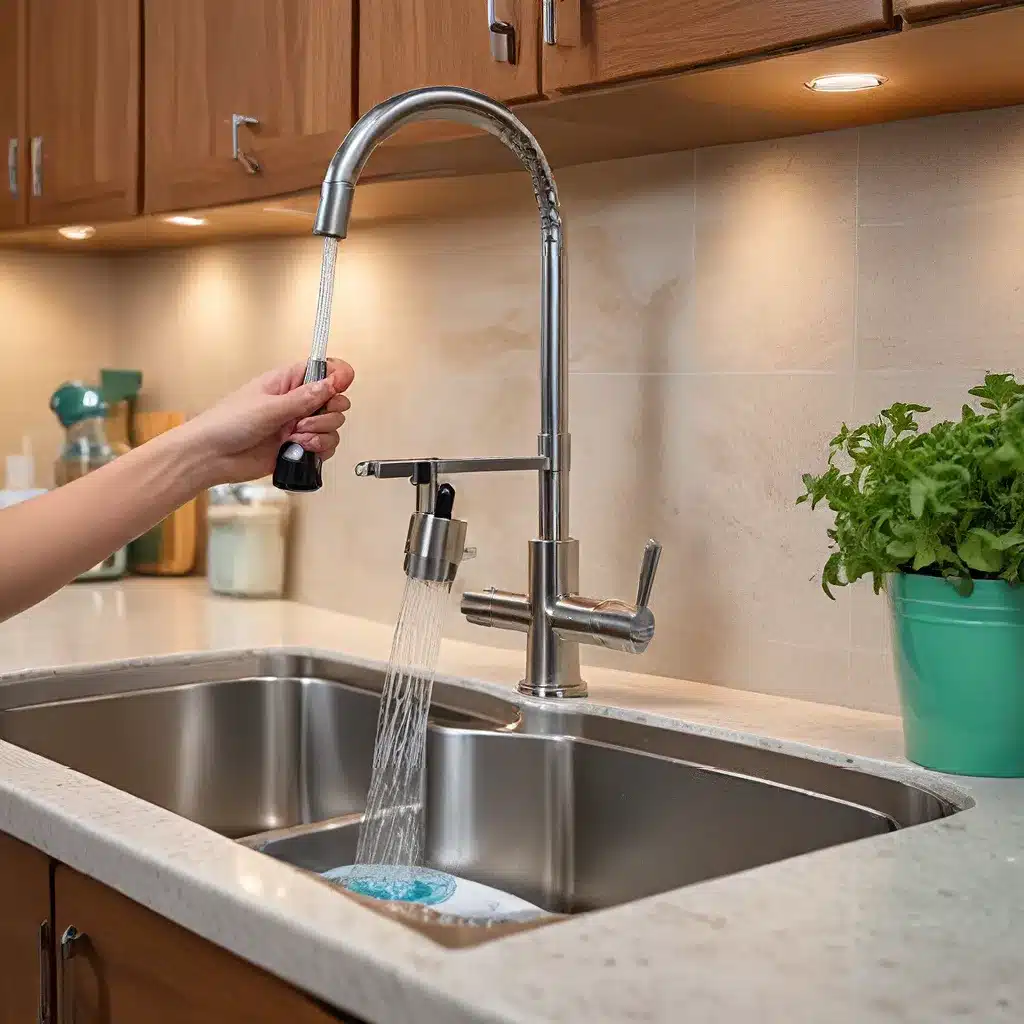As someone who takes pride in maintaining a clean and healthy home, I know firsthand how important it is to keep our kitchens free from harmful germs and bacteria. After all, this is where we prepare the meals that nourish our bodies and bring our loved ones together. But with all the hustle and bustle of daily life, it can be easy to overlook the hidden dangers that lurk in our kitchen corners.
The Invisible Threat: Germs and Bacteria in the Kitchen
Did you know that an estimated 1 in 6 Americans will get sick from food poisoning this year alone? That’s a staggering statistic, and it’s a harsh reminder that the kitchen can be a breeding ground for all sorts of nasty bugs. These pesky microbes can survive on surfaces like our food, hands, utensils, cutting boards, and countertops, just waiting to pounce on the unsuspecting.
But it’s not just foodborne illnesses we need to worry about. With the recent outbreak of COVID-19 and the ongoing threat of the flu virus, keeping our kitchens disinfected has become more crucial than ever. These viruses can linger on common touchpoints, making it essential to have a solid sanitizing plan in place.
Decoding the Cleaning Lingo: Clean, Sanitize, Disinfect
Before we dive into the nitty-gritty of effective kitchen cleaning, let’s clear up the differences between the terms “clean,” “sanitize,” and “disinfect.” According to the Centers for Disease Control and Prevention (CDC), cleaning simply refers to the removal of dirt and grime using soap and water, while sanitizing and disinfecting involve the use of specialized products to kill germs and bacteria.
Sanitizers and disinfectants are typically reserved for situations where you need to actively combat the presence of viruses, germs, and bacteria. These products are especially important when someone in your household has been sick, as they can help prevent the spread of illness to other family members.
Cleaning for Health: The Benefits of a Germ-Free Kitchen
Now, you might be wondering, “Why bother with all this cleaning and disinfecting? Isn’t a little dirt and bacteria good for us?” Well, while it’s true that some exposure to microbes can help strengthen our immune systems, in the kitchen, we want to err on the side of caution.
By keeping our kitchens clean, sanitized, and disinfected, we can enjoy a range of benefits, including:
-
Reduced risk of illness: Removing or killing germs and bacteria can help prevent you and your family from getting sick with illnesses like the flu, COVID-19, or food poisoning.
-
Improved air quality: Reducing dust and allergens in your kitchen can make a big difference for those with conditions like asthma, allergies, or COPD.
-
Stress-free living: A tidy, organized kitchen can help you feel more in control and promote a sense of calm, making it easier to focus on the tasks at hand.
-
Better sleep: A clean, clutter-free kitchen can contribute to a more restful night’s sleep, especially if you have allergies or sleep-disrupting conditions.
-
Potential calorie burn: While cleaning may not be as effective as a dedicated workout, the physical movement involved can contribute to a modest calorie burn.
So, in short, taking the time to keep your kitchen sanitized and disinfected isn’t just about preventing illness – it’s about creating a healthier, more harmonious living environment for you and your family.
Germ-Busting Strategies: Effective Cleaning Techniques for Your Kitchen
Now that we’ve covered the importance of a clean and disinfected kitchen, let’s dive into some practical tips and techniques to help you achieve this goal. Remember, prevention is key, so let’s start by addressing how we can stop germs from entering our homes in the first place.
Hand Hygiene: One of the most effective ways to keep your kitchen germ-free is by washing your hands often. This simple act can help stop the spread of illnesses like the flu, COVID-19, and foodborne diseases. Be sure to use soap and water and scrub for at least 20 seconds, paying special attention to areas like your knuckles and between your fingers. Keeping a bottle of hand sanitizer nearby can also be helpful for quick touch-ups.
Shoe Removal: Did you know that the bottoms of our shoes can be a major source of household germs? By removing your shoes as soon as you enter your home, you can help keep those pesky microbes outside where they belong. Consider setting up a designated shoe rack or storage area near your main entryway to make this a habit.
Device Disinfection: Our beloved smartphones and tablets are like microbial passports, carrying germs from everywhere we go. Make a habit of disinfecting these devices regularly using a lint-free cloth and a mixture of equal parts water and isopropyl alcohol. This simple step can go a long way in preventing the spread of illnesses.
Now, let’s move on to tackling the kitchen itself. One of the key principles here is to clean, sanitize, and disinfect on a regular basis, focusing on high-touch areas and surfaces.
Daily Cleaning: At the end of each day, be sure to wipe down your kitchen countertops, table, and other frequently touched surfaces using a mixture of dish soap and water. This simple step can help remove dirt, grease, and any lingering bacteria.
Weekly Deep Clean: Set aside time each week to give your kitchen a more thorough cleaning. This should include scrubbing the sink, mopping the floors, and wiping down cabinets and appliances. Don’t forget to pay special attention to areas like the fridge, microwave, and oven, which can harbor all sorts of unpleasant surprises.
Sanitizing and Disinfecting: When it comes to combating the spread of viruses and bacteria, you’ll want to reach for sanitizing and disinfecting products. Use these on surfaces like cutting boards, kitchen towels, and sponges, which can harbor harmful microbes. Be sure to follow the product instructions carefully for optimal effectiveness.
Laundry Matters: Don’t forget about the importance of keeping your kitchen linens and fabrics clean. Wash things like dish towels, aprons, and oven mitts regularly, using hot water to help kill any lingering germs.
Proper Tool Maintenance: The tools and implements we use for cleaning can also be a source of contamination if not properly cared for. Wash your sponges, rags, and mops with boiling water to disinfect them, and replace them when they start to look worn or smell funky.
Remember, consistency is key when it comes to maintaining a germ-free kitchen. By making these cleaning and disinfecting habits a regular part of your routine, you’ll be well on your way to a healthier, happier home.
Navigating the Cleaning Product Jungle
With so many cleaning products on the market, it can be challenging to know which ones are truly effective and safe for your family. The CDC and the U.S. Environmental Protection Agency (EPA) offer a helpful database of antimicrobial products that are proven to be effective against a wide range of germs and viruses.
When selecting your cleaning supplies, look for products that are EPA-registered and specifically labeled as disinfectants. Avoid mixing different chemical-based cleaners, as this can create harmful fumes. And don’t forget, there are plenty of affordable, homemade cleaning solutions you can whip up using common household ingredients like vinegar, baking soda, and rubbing alcohol.
Cleaning Hacks and Strategies for a Sparkling Kitchen
As you embark on your journey to a germ-free kitchen, here are a few additional tips and tricks to keep in mind:
Declutter and Organize: An organized, clutter-free kitchen makes it easier to clean and disinfect effectively. Take some time to purge unnecessary items and create designated storage spaces for your cleaning supplies.
Multitask with Music: While cleaning may not be the most thrilling task, you can make it more enjoyable by listening to your favorite music, podcast, or audiobook. This can help the time fly by and make the chore feel less like a chore.
Establish a Cleaning Routine: Decide whether you prefer to tackle all your cleaning tasks in one designated “cleaning day” or spread them out throughout the week. Either way, creating a consistent routine can help ensure your kitchen stays sparkling.
Adapt to Illness Outbreaks: If someone in your household falls ill, be sure to ramp up your cleaning and disinfecting efforts until the sickness has passed. This can help prevent the spread of illnesses like the flu, COVID-19, or norovirus.
Remember, maintaining a clean and disinfected kitchen isn’t just about preventing illness – it’s about creating a healthier, more harmonious living environment for you and your family. With a little bit of diligence and the right strategies, you can conquer those pesky germs and enjoy the benefits of a truly germ-free kitchen.
If you’re looking for professional help to keep your kitchen (or any other part of your home) sparkling clean, be sure to check out the services offered by Adam Cleaning. Their team of experts is dedicated to providing top-notch cleaning and disinfecting solutions tailored to your specific needs.







